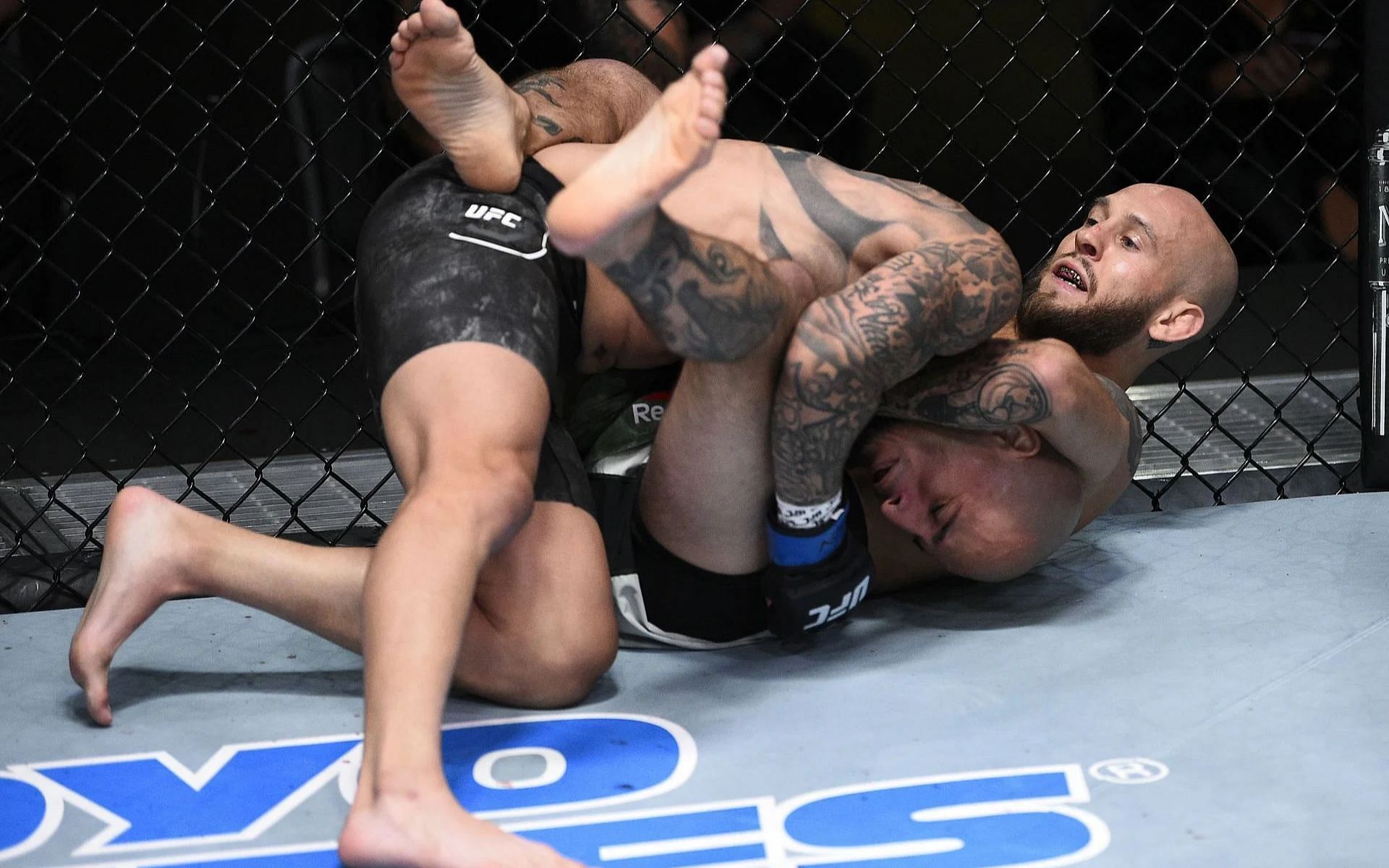
Guillotine choke: What is the best defense against this hold?
In MMA, some submission holds are more commonly used than others, and one of the most common seen in the UFC is the guillotine choke.
The guillotine choke is essentially a chokehold applied from in front of the opponent, and sees the fighter applying it use their arms to encircle the opponent’s neck like the blade of a guillotine.
Depending on how it is applied, the guillotine choke can be used to either cut off the blood supply to the brain, or prevent air flow to the lungs.
The reason that the guillotine choke is so commonly used in the UFC is probably because, when compared to more complicated holds like the omaplata or even the triangle choke, it’s relatively simple to apply to good effect.
More importantly, it can be applied from both a standing position and from on the ground, either from bottom position or from the top.
This year, we’ve seen two memorable guillotine chokes used, one inside the octagon and one outside.
Jon Jones claimed the vacant UFC heavyweight title by using the choke to submit Ciryl Gane in March, and Nate Diaz used a variant of the guillotine to choke TikTok star Rodney Petersen into unconsciousness last month.
Guillotine choke defense: is it possible to defend against this hold?
Like all submissions in MMA, the guillotine choke is dangerous, but it’s also not impossible for a fighter to defend against it and escape from it.
A common defense against the choke used to see the defending fighter keep at least one arm close to the neck, preventing the attacker’s arms from encircling it.
This, however, is no longer as common due to the development of the arm-in guillotine variant. This sees the attacker pull themselves closer to the opponent, rather than lean backwards as they would with the regular variant.
Perhaps the best way to defend against the guillotine, then, is to take a similar approach to defending the rear-naked choke.
In this sense, the defending fighter should tuck their chin into their collarbone as tightly as possible, with the idea being to prevent the attacker’s arms from completely encircling the neck.
We saw a fine example of this in Alexander Volkanovski’s featherweight title bout with Brian Ortega in 2021. In this instance, ‘Alexander the Great’ was able to successfully defend and escape the choke despite being stuck on bottom position.
Another defensive move involves avoiding the attacking fighter pulling guard, or wrapping their legs around the body of their opponent. If this can be avoided, it allows a better angle for the defending fighter to wriggle their head free from the choke.
The main reason we see the guillotine fail inside the octagon, though, tends to be because the attacking fighter simply squeezes too hard in an attempt to finish their foe. This can cause their arms to become exhausted in the process and allowing for an easier escape.
